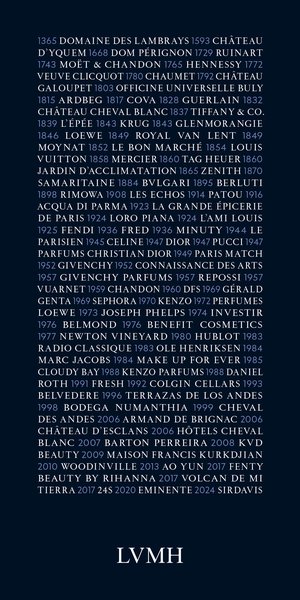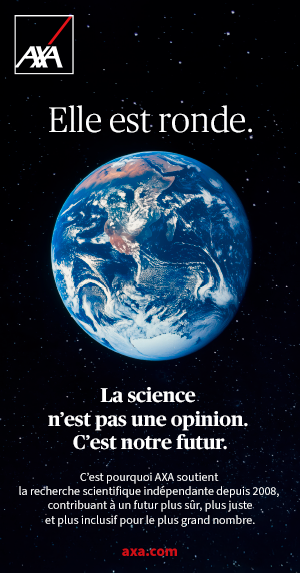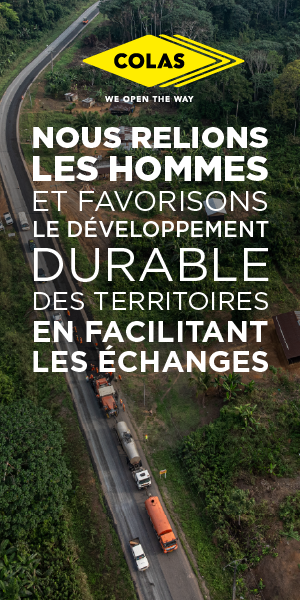Politique Internationale — How did the Insurance and Society chair come about? What are its main objectives?
Raymond Dartevelle — This chair was created in 2015 as a result of collaboration between the University of Paris 1 Panthéon- Sorbonne and the Fédération française de l’assurance (formerly the FFSA), which has since become France Assureurs. The idea was to build a multidisciplinary programme capable of giving historical depth to the sector’s contemporary issues, whereas most university or Grandes Ecoles chairs, specialising in economics, management, finance, actuarial science, mathematics applied to insurance, etc., are mainly geared towards analysing the present and the near future. In short, this is a work setting all fields of research into perspective, while also integrating aspects of memory and heritage. It takes into account recent historiographical contributions or from which the history of insurance has benefited, in particular the concept of ‘Global History’, which focuses on interaction and international links, as well as the analysis of organisational structures and development strategies, as practised in ‘Business History’.
P. I. — Generally speaking, how does the university view the insurance sector?
R. D. — In reality, and if we look at this question from an earlier date, the creation of insurance courses and chairs most often corresponds to an institutional desire to respond to societal demand, or even to a reshaping of the political and economic landscape. For example, in 1927, at a time when the draft French law on social insurance was giving rise to debate and controversy, the Chair of Social Insurance and Welfare, created at the Conservatoire National des Arts et Métiers (CNAM) in 1900, was transformed into a Chair of General Theory of Insurance and Social Welfare. It was entrusted to the actuary René Risser, a polytechnicien and a great connoisseur of the German social protection system. Other examples include the creation in 1946, under the aegis of the CNAM, of the École nationale des assurances (ÉNAss). This was one of the pillars of the post-war reorganisation of the insurance landscape, with the establishment of the Conseil national des assurances and the nationalisation of more than thirty insurance companies. In the early 1930s, against a backdrop of economic crisis, an Institut Supérieur de Science Financière et d’Assurances (ISFA) was set up under the auspices of the Lyon faculties. Specialising in training in actuarial sciences, it is still in operation today. Looking further afield, it is interesting to note that unlike the Anglo-Saxon approach, which is based on learning professional expertise, the German-speaking world is dominated by academic, multi-disciplinary training (legal, mathematical, economic, medical, etc.). This model, which dates back to the end of the 19th century, has contributed to Germany’s commercial expansion and the international development of insurance science.
P. I. — Why has insurance been neglected by historians for so long?
R. D. — There are at least two good reasons for this. Firstly, as the economist Jean Fourastié, holder of the chair at the CNAM where he taught, pointed out in his book Les Assurances au point de vue économique et social (1946), insurance is at the crossroads of several disciplines: law, economics, management, mathematics, actuarial science, statistics, etc. At the same time, insurance activities are part of a long-term historical context: firstly, a market dominated by marine, fire and life insurance; then, from the middle of the 19th century to the 1950s and 1960s, progress in the way companies operated, with technical organisation, concentration, commercial expansion, risk classification and product innovation; finally, in the last quarter of the 20th century, the financialisation of the sector, deregulation and restructuring, with the major transformation of integrated insurance at the heart of the European and global markets.
The second explanation for the ‘sidelining’ of insurance from the historical sphere is the professionalisation of training courses, a trend that is becoming increasingly pronounced at university level. As a result, there is less emphasis on chronological reference points. Yet an examination of long-term trends often reveals the recurrence of certain phenomena, or even their enduring nature: globalisation, for example, which first took shape between 1870 and 1914. What lessons can we draw from this when, as historian Robin Pearson, a specialist in the international history of insurance at the University of Hull (Great Britain) or points out, the area under the control of the imperial European powers in which the insurance industry developed its markets represented 80% of the globalised world before 1914? Today’s globalisation, which began in the 1970s, raises questions for insurance historians about the opening up of economies, the growth of trade, the power of investment, the movement of people and capital, the growing integration of financial markets... In short, it is no coincidence that the International Association for the Study of Insurance Economics was founded in 1973. Called The Geneva Association, it can be likened to a transnational insurance think tank, according to historian Matthieu Leimgruber (University of Zurich). This association, which brings together the heads of the world’s leading insurance groups, aims to identify the major trends and strategic challenges facing the insurance industry in a globalised world that is constantly producing innovations.
P. I. — Looking back over the past few years, what have been the main changes in the insurance sector? What were the most structuring events?
R. D. — The common thread seems to me to lie in the international nature of insurance. In the 18th century, with the domination of British maritime trade, the first major players began to emerge, such as Phoenix Assurances of London, the first insurer to develop outside the United Kingdom, or the British company Sun Fire, which gradually, especially from the 1850s onwards, began to cover the continents with its agencies. We can see that this globalisation was based on port cities. In the 19th century, another future giant appeared on the horizon, the Italian Generali (Assicurazioni Generali), anchored in Trieste since 1831. At the same time, the commercial and financial stakes were already so high that the professionalisation of reinsurance – insuring insurers by spreading risks geographically – became necessary. The Zurich-based company Swiss Re (1863) laid the first technical foundations, with a focus on information and communication, essential factors contributing to a high degree of commercial autonomy on a global scale. The German reinsurer Munich Re, founded in 1880, diversified its lines of business and used its services as a means of penetrating international markets before 1914 (Austria, the Balkans, Italy) and of financially controlling insurance companies. In France, even taking into account companies such as l’Union or la Paternelle (now part of AXA), which had a real capacity for international expansion in the 19th century, the trend remained more modest for a long time, and in any case was not comparable to the representatives of the two great insurance countries, England in the 18th century and Germany at the end of the 19th century, with Allianz founded in 1890.
As far as structuring events are concerned, I think it is also worth mentioning the major issue of the relationship of insurance to the state and to the market. In England, in the 18th century, the state, through marine insurance, confirmed the legitimacy of the contract whatever the type of trade in question, particularly in the colonies, even if it was dubious (smuggling) or illegal (enemy). With the outbreak of the First World War and the magnitude of the risks that multiplied at sea (submarine warfare) and on land (intensity of destruction), state insurance became a necessity for nation states. Its aim was to regulate the premium market, profitable to shipowners and shippers, so that supplies and industrial activity could continue in the midst of a wartime economy. Beyond these exceptional circumstances, insurance sought to strike a fair balance between the regulatory power of nation states, the commercial practices of private players and the rules of international public law, at a time when the economy was becoming global at the turn of the 20th century. The same applies to private arbitration of international commercial disputes, and in particular to questions of contract law. Hence the creation, from the last third of the 19th century onwards, of numerous transnational associations whose aim was to promote forms of regulation for contractual practices and agreements, as well as the standardisation of legislation. British interests played a central role in global economic governance with the London Court of Arbitration (1893) and the American Arbitration Association (1925) was the benchmark institution for arbitration law, including at international level.
P. I. — In passing, what materials can an insurance historian draw on? Are some sources more accessible than others?
R. D. — In the private collections of companies, as much French as foreign (Generali, Allianz, etc.), there are documents containing a wealth of information that deserve to be exploited and developed. More specifically, I am thinking of certain technical reports by inspectors and reinsurers, surveys of insurable risks (fire insurance plans, for example, which have been the subject of recent research work, particularly on London, Alexandria and Istanbul) and agency networks, correspondence on the creation of companies, branches and subsidiaries abroad, etc. The insurance analysis of industrial risks, and of prevention and relief measures, is extremely valuable and should be included in any study of the economic development of our societies. In addition, other private collections, such as those of the institutes of actuaries (with their journals, newsletters and international congresses), help us to better understand the relationship of science and technology to social demand in terms of protection, security and foresight, as well as innovation in relation to their economic development. The public sources held in the various archive repositories (which have the advantage of being easy to access) are dominated by the question of the control and supervision of companies by the regulatory authorities. They should obviously be cross-referenced with private sources, including overseas sources in the case of studies on the imperial insurance regime. Overall, many archive sources remain unexploited. I am thinking more specifically of two central questions to which we cannot fail to pay attention, given the very high geopolitical tensions in our world today.
The first is the analysis of war risk by actuaries. They have made a statistical study of the most significant conflicts – from the Crimean War (1854-1856), considered to be the first modern war, to the mass wars and industrial wars of the 20th century – looking at their repercussions on the mortality of both combatants and civilian populations, taking into account the factors likely to limit losses, and the controversies surrounding damages and compensation.
The second central – and topical – issue concerns the approach to risk culture in non-Western environments. Societies in Asia, Africa and the Middle East, where a significant proportion of the population lives on low income and experiences conditions of precarity under highly fluctuating environmental circumstances, represent innovative fields of research into insurance, based on a diversity of archival approaches. How are security, providence and relief perceived in colonial and post-colonial societies? How is an insurance market constructed in the context of ethnic and community-based social models (1)?
P. I. — What major disasters have underlined the importance of an efficient insurance system?
R. D. — Major fires, such as the one in London in 1666, which almost destroyed one of Europe’s most densely populated cities, acted as triggers. Much later, especially from the last third of the 19th century onwards, work began on mapping risk areas and disasters in urban and industrial centres. Risks began to be rationalised and then modelled to make them more predictable. Some disasters, because of their intensity, have left their mark on the collective memory. The Lisbon earthquake in 1755, for example, was immortalised in Voltaire’s writings. The earthquake, followed by a tsunami and violent fires that destroyed three quarters of the city, killing more than 30,000 people, profoundly shook the scholarly community in Europe. As for the San Francisco earthquake in 1906 (3,000 dead), which was also followed by huge fires that destroyed 80% of the city and affected two-thirds of the population, it enabled insurers to separate fire risk from earthquake risk in future policies. We could mention other major earthquakes, such as the one in Messina in Calabria (Italy), which killed 83,000 people, or the one in Tokyo in 1923, which claimed 142,000 victims and caused an economic disaster equivalent to a third of Japan’s GDP!
That said, until the 1960s, systemic risks were studied and quantified using statistical tools. In the 1970s, Munich Re set up a Geo Risks Research department to develop mathematical models that were very useful to insurers. The first universal map of natural risks was published in 1978. Between the end of the 1990s and the beginning of the 2000s, Munich Re’s engineers and researchers turned their attention to environmental risk, with the construction of maps highlighting the effects on nature of natural and man-made climate variations and changes. As a result, private insurance is at the heart of a synergy that brings together public partners, university research, consultancy firms and specialist appraisal agencies. To finish answering your question, I would like to remind you that in the 20th century, natural disasters (earthquakes, storms, floods, volcanic eruptions and others) claimed more than 10 million victims (almost 400,000 of them between 1989 and 1999 alone). Floods account for a large proportion of this figure (nearly 60%), but earthquakes are particularly deadly and destructive. Storms accounted for two-thirds of insured damage, followed far behind by earthquakes (20%).
P. I. — Going back for a moment to what’s happening right now, can Covid be seen as an upheaval for the insurance industry? A lot of criticism has been levelled at the big companies for not getting to grips with the issue...
R. D. — Let’s not forget that the risk of a pandemic has always been excluded from contracts which do not cover their economic consequences, and that in the past, epidemics and even pandemics were part of the ‘fear in the West’ studied by Jean Delumeau, the historian of religious mentalities. Without going back for all that to the Black Death – pneumonic and septicaemic – in the middle of the 14th century, a devastating scourge that killed no less than 25 million people in five or six years, a third of the population, and which gave rise to a veritable ‘culture of death’, a morbid discourse on man and the world, let’s recall another pandemic, the Spanish flu, which raged during the years 1918-1919. Its Asian origin and its beginnings bear some similarities to Covid, although the influenza A(H1N1) virus is different from that of Covid 19 (coronavirus family, SARS-CoV-2). Similar, too, in terms of its very rapid spread to every continent (a third of the world’s population has been infected), the lethality of the virus with a high mortality rate among adults, the unpreparedness of societies, and the difficulties of coping with the pandemic in the absence of effective vaccines and treatments. In all, some 50 million people died from Spanish flu, almost a third of them in China and India. As with Covid, companies were faced with a major systemic crisis.
In an article in the French newspaper Le Monde in 2020, the recently deceased economist Denis Kessler, who was Chairman of Scor, recalled the specific features of the Covid 19 crisis that made the pandemic all the more formidable: a global ‘space- time’, no precise geolocation, a very rapid and exponential spread, action through successive rebounds, exogenous and endogenous features, the risk being both collective and individualised. In fact, each person’s protective and precautionary behaviour interacts with the effectiveness of the healthcare system to slow the spread of infection. Covid therefore necessitated urgent epidemiological, health, economic and social responses, essential in a world opened up by the globalisation of trade.
So what about insurance? The risks generated by Covid 19, because of their unpredictability, were not assessed beforehand, particularly for operating losses without damage. Hence the criticisms you mention. However, as Denis Kessler points out, beyond the strictly technical aspects (risk management, etc.), insurance was confronted with the civilisational concept of vulnerability in the face of mortal danger and, consequently, with the overriding concern to preserve life. It is this feeling that, in spreading across the planet, generated a global economic shock. As both a witness and an actor, the insurance industry has therefore taken into account the changes that such a long-term crisis has brought about in societal models, political governance (the return of a protective and supportive state) and new ways of thinking about social ties, taking action, anticipating through mathematical modelling, and thus forecasting the risks to be covered. Finally, as with the environmental crises, Covid has had a major impact on the most economically vulnerable populations, most of whom are excluded from any insurance system.
P. I. — We know how important the big insurance companies are today. When did they start to emerge?
R. D. — In the specific case of France, everything accelerated after the Second World War. In the difficult economic and financial context of the country’s reconstruction (cf. the Marshall Plan and American support for Europe’s economic recovery), the companies reorganised – with mergers, the technical concentration of services, head offices, branch networks, etc. – and increased their productivity, a trend that had already begun in the inter-war period. The companies were nationalised in 1946 (60% of the market), were concentrated in 1968 by the state shareholder into three groups (UAP, AGF and GAN), then were successively privatised between 1994 and 1998. The important thing was not so much the management, which was hardly any different from that of private companies, as the effect of size, the notions of scale and diversification. These are essential if companies are to adapt to growth and international competition, which has been extended to the European framework since the directives of 1973 to 1992. The larger a company is, the more capable it is of developing at the heart of the financial markets that are accompanying the globalisation of the economy, and of confronting globalisation. In this respect, I must refer to the extraordinary collective adventure of the AXA Group, created and embodied with charisma by Claude Bébéar. Let’s not forget that the AXA Group is rooted in the history of two groups that were restructured, precisely, after 1945, up until the early 1950s: the Anciennes Mutuelles group (around 1% of the insurance market, which became Mutuelles Unies in 1978) and the Groupe Drouot (3%), which was controlled by Mutuelles Unies in 1982, even though it was the leading private insurance group.
P. I. — Behind these transformations, there are also personalities...
R. D. — Yes, you’re right to point that out. These stories are all embodied by strong personalities who left their mark on the history of insurance through their innovative vision. In the case of France, we should mention two major figures who died in 1972, both of whom, like Claude Bébéar, had a polytechnic background and played a key role in the successful confrontation with modernity. Firstly, Georges Tattevin, Chairman of Groupe Drouot. He was the head of the first insurance productivity mission sent to the United States in 1951 and the first chairman of the Comité d’action pour la productivité de l’assurance (CAPA), which was officially set up in France in January 1952 to disseminate the methods imported from the United States (management, marketing, training, communication, etc.). Its creation owed much to the professional organisations encountered in the United States, including the Life Office Management Association (LOMA, founded in 1924). Georges Tattevin can also be seen as a tireless pioneer in the spread of information technology in insurance companies. Finally, it is hard not to mention André Sahut d’Izarn, the embodiment of an older generation of managers, with his prescient vision of a future of large groups with an international outlook. The Europe of the 1960s, which he saw as the domestic insurance market, needed to be open to expansion in all countries, particularly the United States, the land of mergers and mass consumption, and to innovation. By entrusting Claude Bébéar, who had joined the Anciennes Mutuelles de Rouen group in 1958, with the task of setting up the life insurance arm of Provinces Unies, the group’s Canadian subsidiary, he gave him a good start with the results we all know.
P. I. — From your historian’s point of view, how do you explain the fact that the insurance industry has had little or no success in building a positive public image? Is this shortcoming justified? Is there any chance of a reversal in this trend?
R. D. — This has been a constant throughout history and is confirmed by contemporary surveys and opinion polls. There is undoubtedly confusion about the very function of insurance, between collective and individual demand for security, assistance and solidarity, on the one hand, and the commercial or non-commercial nature of this sector, on the other. This is why we will shortly be organising an international conference to explore the notion of image and representation of insurance throughout history, bringing together all the disciplines of the humanities and social sciences.
This poor image is also linked to a great deal of ignorance on the part of the general public. I would like to take this opportunity to remind you that the insurance industry can pride itself on some major achievements that have left their mark on demographic and medical sciences. I am thinking, for example, of the concept of ‘probability of invalidity’, with the creation of morbidity tables; I am also thinking of the search for ‘assessment scales’, ‘numerical indices’, and all the statistical surveys carried out, particularly in the United States, from the 1890s to the 1920s, which led to a better understanding of so-called chronic diseases; to the creation of the concept of a ‘risk factor’ linked to the predictability of certain cardiovascular diseases; to the creation of the medical questionnaire in life insurance; to the development of international statistics on accidents at work; to the participation of medical insurance in the search for an international nomenclature of diseases... In short, it should be emphasised that, over and above commercial interests and financial considerations, insurance has played, and continues to play, a major role in prevention policies.
P. I. — More than ever, the future is set to be dominated by artificial intelligence (AI). Is this a minor revolution for the insurance industry, as it already is for many other activities?
R. D. — The rise of AI is quite comparable to the computer revolution of the 1960s, which took place in the more global context of an overall reflection on automation, the use of cybernetics and what we now call the new information and communication technologies (NICTs), with their consequences for the management of organisations. It is clear that, like AI, the IT revolution has necessitated a psycho- social approach to the new understanding of human relationships generated by this transformation. AI is set to reconfigure a whole series of processes, and to a large extent data management. As with computing over sixty years ago, we are dealing with a disruptive technology, which will gradually instil a new culture, as history has already taught us.
(1) We played an active part in these discussions by organising an international conference on ‘Insurance and Colonisation’ at the Sorbonne last May, the proceedings of which will be published in 2025 by the academic publisher Classiques Garnier.




















